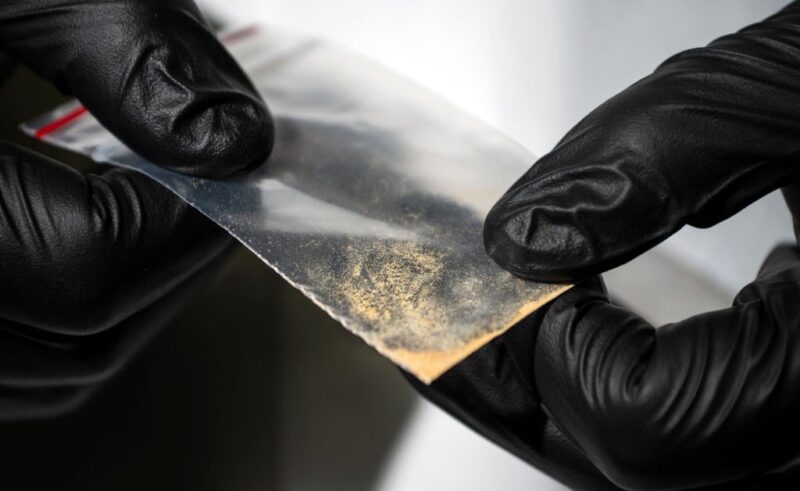In Tennessee, data pins Knox County as the hotspot for emerging synthetic opioids known as nitazenes—compounds estimated to be 10 to 40 times stronger than fentanyl, now appearing in the illicit drug supply across the United States.
Yet, according to Chris Thomas, Chief Administrative Officer at the Knox County Regional Forensic Center, Tennessee’s overdose map is more reflective of where testing is happening, not necessarily where people are dying. “It’s not that Knox County is definitely the hardest-hit spot of the epidemic,” he explains. “Other counties simply don’t have the resources to test for drugs like nitazenes or other novel synthetics. They only have the funding to run basic panels.”
That chilling insight exposes a national blind spot. Across the country, medical examiner and coroner offices—our first line of defense in understanding what’s killing Americans—are unable to detect many of the compounds fueling the next phase of the overdose crisis. But simple changes could be transformational.
A public health crisis hidden in plain sight
Much of our country still relies on toxicology panels built for yesterday’s drug supply. These panels can reliably identify heroin, oxycodone, and fentanyl, but fail to catch nitazenes, brorphine, or other new synthetic analogs. This gap means that policymakers and public health professionals chase outdated trends.
Meanwhile, drug manufacturers exploit loopholes, evading detection and remaining a step ahead. This is exactly what happened with the rise of xylazine, the veterinarian tranquilizer that doesn’t respond to Narcan, which has significantly complicated overdose responses across the country. It took years, and too many deaths, before xylazine testing became a relatively common practice.
Our statistics may look highly granular—broken down by county, substance, and year—yet they’re still vulnerable to major blind spots. A person who dies with both cocaine and a nitazene in their system might still be coded as a “cocaine death” if the nitazene wasn’t recognized or confirmed. As fentanyl deaths steeply decline, national figures make cocaine seem responsible for a growing share of overdoses—but that’s misleading if many of those cases actually involve cocaine combined with nitazenes or other synthetic opioids that weren’t detected.
If we don’t have a true grasp of the epidemiology, we can’t understand where the epidemic is heading—or how to stop it.
Why aren’t we tracking this?
As Thomas explains, most medical examiner and coroner offices were created to serve the criminal justice system and determine cause and manner of death for legal and administrative purposes. Their budgets, set by counties or municipalities as opposed to health departments, are not structured to empower the tracking of emerging drug threats.
Detecting nitazenes and other novel compounds requires expensive technology, like liquid or gas chromatography, mass spectrometry, and highly trained personnel that can find these drugs despite their low molecular weight. Many offices, especially in rural areas, lack both the infrastructure and the funding for this.
Read more: We Can Prevent Overdose Deaths if We Change How We Think About Them
While the Drug Enforcement Administration (DEA) has partnered with the University of California, San Diego in a promising endeavor to cover the costs of secondary laboratory testing, the scale remains minuscule. In the fourth quarter of 2024, the program received and analyzed only 88 samples from 18 states and one U.S. territory. Per Thomas, even the act of saving, storing, recording, packaging, and shipping samples requires time and staff that many offices don’t have.
The result is a fragmented, inequitable national surveillance system—one where the drugs we detect depend largely on where a person dies. Our lack of understanding paralyzes our ability to get in front of the supply.
The fix: Increase funding to see the crisis clearly
The money to fix this problem already exists. More than $50 billion in opioid abatement settlements—paid by pharmaceutical companies, distributors, and pharmacies—is now flowing to states. These funds were designed to prevent and mitigate further harm from the opioid epidemic, but each state divides its share differently among agencies, counties, and community programs. And just this month, a new deal with Purdue Pharma and the Sackler family added up to $7.4 billion in potential additional payments, a portion of which will reach state and local governments.
Most funds go toward treatment, prevention, and harm reduction—all essential work—but little supports forensic and toxicology systems, even though they underpin our understanding of the crisis itself. These offices are often so chronically underfunded that even a modest investment could be transformational in helping us respond to the crisis before the next wave hits.
Many states retain a state-controlled portion of the settlements that allows for strategic, discretionary use. These funds can have flexible applications, and Tennessee recently directed its discretionary share to launch a wastewater drug-testing pilot.
Federal policymakers could go further by mandating states to dedicate a small portion of their discretionary funds to strengthen forensic capacity nationwide. With this funding, states could broaden toxicology panels to detect novel synthetic opioids and other emerging threats; hire and retain forensic toxicologists to interpret results and update testing libraries; support staffing and logistics to send samples to DEA or university reference labs for secondary testing; and integrate death-investigation data with public-health systems in real time.
The stakes of staying blind
We can’t solve what we can’t measure, so let’s use opioid abatement funds to help. Comprehensive toxicology would let us anticipate the next crisis instead of chasing the last. Testing the drug supply is not just a courtroom or administrative function; it’s a cornerstone of public health.








